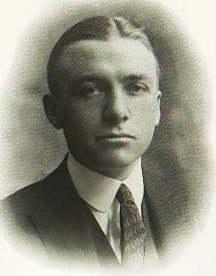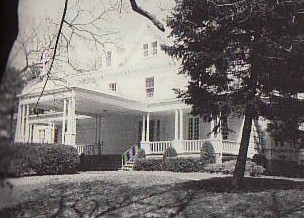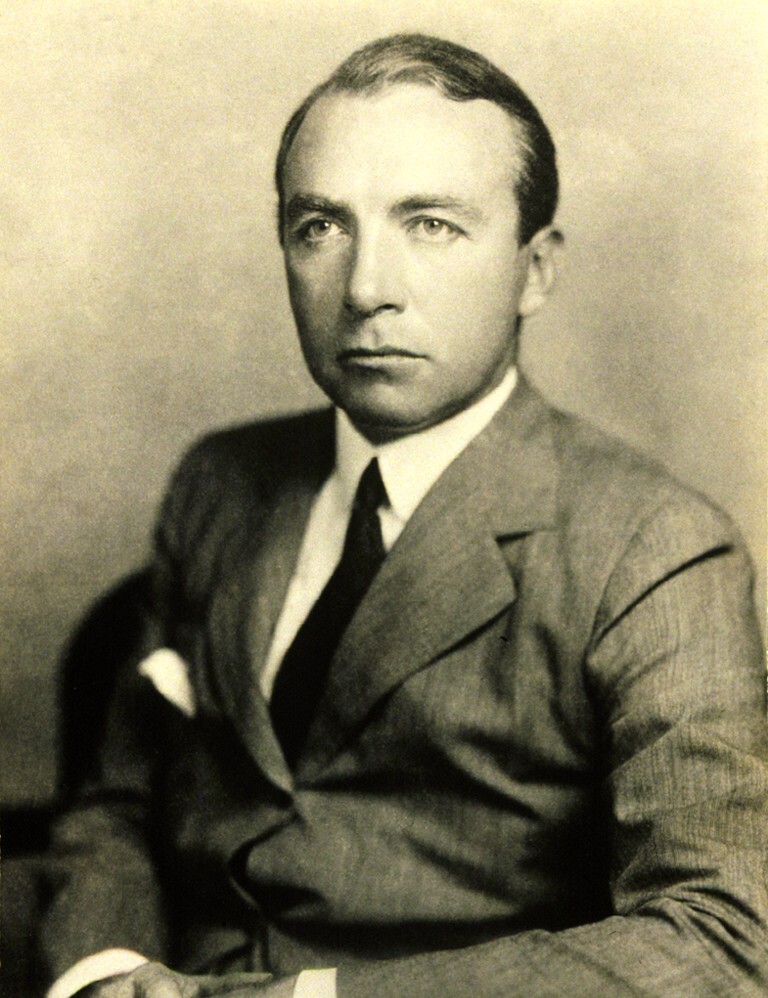The Mayor
Which former Johnson & Johnson chairman once soothed the temper of an irate resident of his town by taking out her garbage? And why did he feel the need to do such a thing?
The chairman was General Robert Wood Johnson, and he felt it was part of his duty as Mayor of Highland Park, New Jersey.

Robert Wood Johnson, circa 1920
In the late Nineteen-teens, Robert Wood Johnson and his wife moved into the Johnson family farmhouse, Bellevue, in Highland Park, right across the Raritan River from New Brunswick. (The house, which Johnson eventually gave to the religious order the Society of Our Lady of the Cenacle, still stands today on River Road.) When Johnson lived there, he could look straight across the Raritan at the ever-growing group of Johnson & Johnson buildings.

Bellevue Farm House

Johnson & Johnson in 1920, with the Raritan River at Right
In the tradition of his father, Robert Wood Johnson the first, who had shown an interest in civic improvement in New Brunswick, the younger Robert began to take an interest in Highland Park. Most of Highland Park’s streets were not yet paved, and after heavy rains they became seas of mud that stopped the flow of traffic. In early 1918 a vacancy had been created on the Highland Park Borough Council, and Robert Wood Johnson was asked if he would fill it. He accepted, and was appointed to the council on February 5, 1918, at age 24. The experience started Johnson’s lifelong interest in public service and politics. Johnson, who liked to defy convention, labeled himself as a “conservative liberal.” He did a good job as a borough council member and soon earned the respect of the other members and the residents of Highland Park. In the next election in 1919, when his term was up, Johnson decided to run for his council seat, and because he ran a low-key campaign and had earned the respect of the town, he was elected by a majority of the voters and ended up placing highest on the ticket. As a result, the borough of Highland Park decided to make him the mayor at its reorganization meeting in January of 1920. Johnson was 26. In his acceptance speech, he said “’Paving is our first consideration this year,” and instead of leaving it as a vague promise, he went on to list the streets to be paved, the equipment to be used, and the instructions for the work crews. (RWJ: The Gentleman Rebel, by Lawrence G. Foster, p. 145). Clearly, Robert Wood Johnson had thought a good deal about exactly how he was going to carry out his new duties.

During Johnson’s term as mayor of Highland Park, the streets were paved, the water system was improved and the costs of the local government were reduced. But he would become best known for taking out the garbage in his tuxedo.
According to Johnson himself, quoted in Larry Foster’s book Robert Wood Johnson: The Gentleman Rebel, here’s what happened:
“ ‘…I was having a formal dinner party with about twenty guests. We were all at the table eating when I was called to the telephone. It was a woman who berated me as being a terrible mayor because her garbage hadn’t been collected. So, still in my dinner clothes, I got in the station wagon and drove to her house and asked if she was the woman who had called about the garbage. She said she was, so I asked her where I’d find it. She pointed it out to me, so I picked up the can, put it in the station wagon and drove to the dump and dumped it. Then I went back to hosting my dinner party.’ ” (RWJ: The Gentleman Rebel, pp. 145-146)
(In case that description sounds a bit too suspiciously modern, they did have station wagons in the 1920s – station wagons went all the way back to the days of the Model T, and before that, they were horse-drawn.)
As this story rapidly spread through the town, Johnson’s unusual and effective way of handling the situation earned him a lot of support. Robert Wood Johnson brought that outlook and his new ways of approaching problems across the river to Johnson & Johnson, where he had a surprising idea about how to increase the Company’s business after World War I. More on that in my next post.
